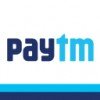
i
Navi Technologies
Filter interviews by
Clear (1)
Navi Technologies Software Development Engineer Intern Interview Questions and Answers
Navi Technologies Software Development Engineer Intern Interview Experiences
1 interview found
There were 20 aptitude question based on general mathematics
There were 2 dsa question of medium difficulty
(2 Questions)
- Q1. Question based on resume
- Q2. Why this project
(2 Questions)
- Q1. Why you want to join this company
- Ans.
I am passionate about the company's innovative projects and collaborative work culture.
I admire the company's commitment to cutting-edge technology and continuous learning opportunities.
I am excited about the chance to work with a diverse team of talented individuals.
The company's reputation for fostering creativity and innovation aligns with my career goals.
- Q2. What is weakest point of your life
- Ans.
Struggled with self-confidence due to childhood bullying
Bullied in school for being different
Struggled to make friends and trust others
Affected my self-esteem and ability to speak up for myself
Top trending discussions






Interview questions from similar companies

I applied via Campus Placement
Interview Preparation Tips
Experience: They selected 10 students from our college from CS and IT .They are looking for guys with extra projects done during college .App development will be a bonus ,contribution to open source and competitive programming will help for shortlisting.
Some of my friends had research papers published and they too got selected.
Round: Test
Experience: Have to write code snippet for 4 questions in 45 minutes
1.Difference between hour hand and minute hand
2.longest palindromic sub string.
3.Product Array puzzle
4.Some question related to matrix
Tips: All question were from geeksforgeeks
So practice it well ..u will make through it
Round: Test
Experience: Long Discussion on projects
They will scan each and every line of your Resume ,so dont write bullshits..
I wrote about interest in AI and got screwed..Discussion on college projects and final year project.
Then asked me to design a snake and ladder game OOPS concepts
Told me to find sum of all elements of sub matrix..(hint pre-processing the matrix)
Asked me about sessions and cookies
Gave a query to write on database indexing (dont remember exactly)
Asked me the code of the difference between hour hand and minute hand and extended it wid the second hand
Asked me as how to implement a dictionary
asked about TRIES ,CODE SNIPPET ON THE SHARED DOCS
One of my friend was asked to implement (set) of STL
Tips: The interviewer was cool guy..helped me a lot always made me comfortable.Interact with them as much as possible
Round: Test
Experience: Wid the CTO of the company .
Started wid the projects again .ACID properties,Database transactions,Concurrency Control
Optimization in database.
Then he asked me to code a function
Given a hash function applied on letters of English words ,un-hash it.Took me 45 minutes to reach the solution ,he helped me a lot.
Asked me to write the code for diameter of a binary tree
Asked me write the code for Boolean Matrix
One of my friend was asked to a question in which there was a bug in a m*n matrix and we have to find the bug(hint dfs or bfs)
Tips: keep calm ,,just keep talking ad he will help u a lot...
Round: HR
Experience: This was the toughest round for me...I had cleared all the rounds but they rejected me in the HR round ,,,dont know where I screwed..Learn every thing of Zomato..
They offered me an internship and thereafter they would look to give a PPO ...!!!lets see what happens
Skills: Coding Skills And Knowledge On Data Structures
Duration: 3
College Name: NIT Srinagar

I was interviewed before Jan 2021.
(3 Questions)
Round duration - 60 Minutes
Round difficulty - Medium
This was a typical DS/Algo where I was asked to solve two questions related to Binary Trees and write the pseudo code for both of them followed by some theoretical questions related to Operating Systems.
- Q1.
K-th Largest Number in a BST
Given a binary search tree (BST) consisting of integers and containing 'N' nodes, your task is to find and return the K-th largest element in this BST.
If there is no K-th la...
- Ans.
Find the K-th largest element in a BST.
Perform reverse in-order traversal of the BST to find the K-th largest element.
Keep track of the count of visited nodes to determine the K-th largest element.
Return -1 if there is no K-th largest element in the BST.
- Q2.
Is Height Balanced Binary Tree Problem Statement
Determine if the given binary tree is height-balanced. A tree is considered height-balanced when:
- The left subtree is balanced.
- The right subtree is bala...
- Ans.
Determine if a given binary tree is height-balanced by checking if left and right subtrees are balanced and their height difference is at most 1.
Check if the left subtree is balanced
Check if the right subtree is balanced
Calculate the height difference between the left and right subtrees
Return 'True' if all conditions are met, otherwise return 'False'
- Q3. Can you explain the concepts of Zombie Process and Orphan Process in operating systems?
- Ans.
Zombie process is a terminated process that has completed execution but still has an entry in the process table. Orphan process is a process whose parent process has terminated.
Zombie process is created when a child process completes execution but its parent process has not yet read its exit status.
Zombie processes consume system resources and should be cleaned up by the parent process using wait() system call.
Orphan p...
(3 Questions)
Round duration - 60 Minutes
Round difficulty - Medium
This was also a Data Structures and Algorithm round where I was asked to solve 3 medium to hard level problems along with their pseudo code within 60 minutes .
- Q1.
Longest Substring Without Repeating Characters Problem Statement
Given a string
Sof lengthL, determine the length of the longest substring that contains no repeating characters.Example:
Input:
"abac...
- Ans.
Find the length of the longest substring without repeating characters in a given string.
Use a sliding window approach to keep track of the longest substring without repeating characters.
Use a hashmap to store the index of each character in the string.
Update the start index of the window when a repeating character is found.
Calculate the maximum length of the window as you iterate through the string.
Return the maximum le
- Q2.
Problem: Search In Rotated Sorted Array
Given a sorted array that has been rotated clockwise by an unknown amount, you need to answer
Qqueries. Each query is represented by an integerQ[i], and you must ... - Ans.
Search for integers in a rotated sorted array efficiently.
Use binary search to efficiently search for integers in the rotated sorted array.
Handle the rotation of the array while performing binary search.
Return the index of the integer if found, else return -1.
- Q3.
Count Subarrays with Sum Divisible by K
Given an array
ARRand an integerK, your task is to count all subarrays whose sum is divisible by the given integerK.Input:
The first line of input contains an... - Ans.
Count subarrays with sum divisible by K in an array.
Iterate through the array and keep track of the prefix sum modulo K.
Use a hashmap to store the frequency of each prefix sum modulo K.
For each prefix sum, increment the count by the frequency of (prefix sum - K) modulo K.
Handle the case when prefix sum itself is divisible by K.
Return the total count of subarrays with sum divisible by K.
(2 Questions)
Round duration - 50 Minutes
Round difficulty - Medium
In this round , I was asked to code a simple question related to BST . After that I was asked the internal implementation of a Hash Map where I was supposed to design a Hash Map using any of the Hashing Algorithms that I know . This was preety challenging for me but I got to learn so much from it.
- Q1.
Ceil Value from BST Problem Statement
Given a Binary Search Tree (BST) and an integer, write a function to return the ceil value of a particular key in the BST.
The ceil of an integer is defined as the s...
- Ans.
Ceil value of a key in a Binary Search Tree (BST) is found by returning the smallest integer greater than or equal to the given number.
Traverse the BST to find the closest value greater than or equal to the key.
Compare the key with the current node value and update the ceil value accordingly.
Recursively move to the left or right subtree based on the comparison.
Return the ceil value once the traversal is complete.
- Q2.
Design a Constant Time Data Structure
Create a data structure that maintains mappings between keys and values, supporting the following operations in constant time:
1. INSERT(key, value): Add or update t... - Ans.
Design a constant time data structure to maintain mappings between keys and values with various operations.
Use a hash table to achieve constant time complexity for INSERT, DELETE, SEARCH, and GET operations.
Keep track of the number of key-value pairs for GET_SIZE operation.
Check if the hash table is empty for IS_EMPTY operation.
Return true or false for SEARCH operation based on key existence.
Return the value associated...
Interview Preparation Tips
Tip 1 : Must do Previously asked Interview as well as Online Test Questions.
Tip 2 : Go through all the previous interview experiences from Codestudio and Leetcode.
Tip 3 : Do at-least 2 good projects and you must know every bit of them.
Tip 1 : Have at-least 2 good projects explained in short with all important points covered.
Tip 2 : Every skill must be mentioned.
Tip 3 : Focus on skills, projects and experiences more.
Skills evaluated in this interview

I was interviewed before Jan 2021.
(3 Questions)
Round duration - 90 Minutes
Round difficulty - Hard
I found the online coding round of Flipkart to be quite difficult based on the constraints of the problem and their time limits. I coded the first problem quite easily but on the second and the third problem , my code could only pass a few test cases and gave TLE for most of them. Both the questions required very efficient solution and the last 5 to 10 Test Cases carried more weight than the rest so I didn't get through this round.
- Q1.
Print the Kth Digit
Given three non-negative integers N, M, and K, compute the Kth digit from the right in the number obtained from N raised to the power M (i.e., N ^ M).
Input:
The first line contains ... - Ans.
The task is to find the Kth digit from the right in the number obtained from N raised to the power M.
Iterate through the digits of N^M from right to left
Keep track of the position of the current digit
Return the digit at position K from the right
- Q2.
The Skyline Problem
Compute the skyline of given rectangular buildings in a 2D city, eliminating hidden lines and forming the outer contour of the silhouette when viewed from a distance. Each building is ...
- Ans.
Compute the skyline of given rectangular buildings in a 2D city, eliminating hidden lines and forming the outer contour of the silhouette.
Iterate through the buildings and create a list of critical points (x, y) where the height changes.
Sort the critical points based on x-coordinate and process them to form the skyline.
Merge consecutive horizontal segments of equal height into one to ensure no duplicates.
Return the fin...
- Q3.
Longest Palindromic Substring Problem Statement
You are provided with a string
STRof lengthN. The goal is to identify the longest palindromic substring within this string. In cases where multiple palind... - Ans.
Identify the longest palindromic substring in a given string.
Iterate through the string and expand around each character to find palindromes
Keep track of the longest palindrome found
Return the longest palindrome with the smallest start index
Interview Preparation Tips
Tip 1 : Must do Previously asked Interview as well as Online Test Questions.
Tip 2 : Go through all the previous interview experiences from Codestudio and Leetcode.
Tip 3 : Do at-least 2 good projects and you must know every bit of them.
Tip 1 : Have at-least 2 good projects explained in short with all important points covered.
Tip 2 : Every skill must be mentioned.
Tip 3 : Focus on skills, projects and experiences more.
Skills evaluated in this interview

I applied via Campus Placement
Interview Preparation Tips
Experience: It was a good one but both questions would have been easy if we know more libraries in java
Tips: Both the questions were related to bigint. It could have been better if both questions were from different areas
Duration: 90 minutes
Round: Technical Interview
Experience: I felt my interview went fine since i was able to answer most of their questions.They gave many hints even if i didn't get the right one
Tips: Everything was fine
Round: HR Interview
Experience: I was able to see myself how i responded to questions asked regarding me and sometimes i was just blabbering
Tips: nothing
General Tips: One must be good at datastrucures and algorithms
Skill Tips: nothing
Skills: Datastructures and Algorithms
Duration: 2
College Name: IIT Madras
Motivation: I wanted to do something for the company where I ordered many of my things
Funny Moments: No funny moments as such but I enjoyed talking to the hr interviewer

I applied via Campus Placement
Interview Preparation Tips
Experience: The test started very late due to some technical issues and space issues. So , It helped us to be far more relaxed.
Duration: 11/2 hr minutes
Total Questions: 2
Round: Technical Interview
Experience: The Overall Technical Interview was a mixture of innovation and apprehension and it really helped me to get my strengths and weaknesses out. The questions outsmarted me at the beginning, Later I did.
Round: HR Interview
Experience: HR was very friendly. He asked about my strengths and weaknesses. And then we continued talking about the nature of work and sincerity and technicality expected from my side, while taking a stroll in cool night air.
Skills: Algorithms and DataStructures
Duration: 2 months
College Name: IIT Madras
Motivation: The work specification

I applied via Campus Placement
Interview Questionnaire
2 Questions
- Q1. First question was about a robot and tracking his movements.Given a string of moves a robot makes check if he ends up at the location he starts from?
- Q2. Given a list of stars and their distances from the earth.Find an efficient solution to find the k closest stars to earth?
- Ans.
Efficient solution to find k closest stars to earth from a list of stars and their distances.
Use a priority queue to store the distances of stars from earth.
Iterate through the list of stars and add their distances to the priority queue.
Pop k elements from the priority queue to get the k closest stars to earth.
Interview Preparation Tips
Experience: The online coding test is not that difficult. The questions are very easy. Only thing is that you have to come up with an efficient solution.The naive solutions are fairly obvious.
Tips: Practice some algorithms questions.
Duration: 90 minutes
Total Questions: 2
Round: Technical Interview
Experience: First question was very simple. I was asked for the solution first and then to write the code on paper and show it to him.Second question requires more time to think.
Tips: A good knowledge of data structures and algorithms will help you clear the interview with ease.
Round: HR Interview
Experience: The guy asking questions makes you feel relaxed. He will give you a feedback about the test and the questions asked in the test. I appreciated the feedback. He pointed out things i could have done better.
Tips: The HR interview is relatively easy. Its just a chat about you and your interests and some other questions like "why should I hire you?".
General Tips: A good knowledge of Data structures and Algorithms will help clear the interview and the test.
Skill Tips: Practice Data structures and Algorithms questions.
Skills: Data structures and Algorithms, Coming up with efficient solutions
Duration: 2
College Name: IIT Madras
Motivation: I wanted to apply for Flipkart as I have seen its meteoric rise in the past few years. It has transformed the wasy people shop in India.
Skills evaluated in this interview

Interview Questionnaire
9 Questions
- Q1. A sentence is given which contains lowercase English letters and spaces. It may contain multiple spaces. Get first letter of every word and return the result as a string. The result should not contain any ...
- Q2. Find Nth largest element in the BST
- Ans.
Find Nth largest element in the BST
Traverse the BST in reverse inorder and keep track of count
If count equals N, return the current node's value
If count exceeds N, stop traversing and return null
If count is less than N, continue traversing
- Q3. Given a BST, find the node which contains the value which is equal to or greater than the input value?
- Ans.
Find node in BST with value equal to or greater than input value.
Start at root node
If input value is less than current node value, move to left child
If input value is greater than or equal to current node value, move to right child
Repeat until node with desired value is found or null is reached
- Q4. Write a program to check if a binary tree is balanced
- Ans.
Program to check if a binary tree is balanced
Calculate height of left and right subtrees recursively
Check if the difference in height is not more than 1
Repeat for all nodes in the tree
Time complexity: O(nlogn) or O(n)
Space complexity: O(h) where h is the height of the tree
- Q5. Given s string, Find max size of a sub-string, in which no duplicate chars present?
- Ans.
Find max size of a sub-string with no duplicate characters in a given string.
Use a sliding window approach with two pointers.
Maintain a hash set to keep track of unique characters.
Update the maximum length of the substring as you iterate through the string.
- Q6. What is a hash table? Explain how they work (hash function and buckets)?
- Ans.
A hash table is a data structure that stores key-value pairs and uses a hash function to map keys to buckets.
Hash function takes a key and returns an index to a bucket
Collisions occur when multiple keys map to the same bucket
Collision resolution techniques include chaining and open addressing
Example: Dictionary in Python uses hash tables to store key-value pairs
- Q7. WAP to find a continuous subset whose sum is divisible by 7. We are given a array of number (-ve and +ve). calculate the complexity of your algorithm?
- Ans.
WAP to find a continuous subset divisible by 7 from an array of numbers. Calculate algorithm complexity.
Iterate through the array and calculate the prefix sum modulo 7 at each index.
Store the prefix sum modulo 7 in a hash table with the index as the value.
If a prefix sum modulo 7 is already in the hash table, the subarray between the two indices has a sum divisible by 7.
Time complexity is O(n) and space complexity is O
- Q8. Given a 2-dimensional array of integers, find the value 1 in the array, and set all those rows, and columns to 1, which contains one of the values as 1
- Ans.
Given a 2D array of integers, set rows and columns to 1 if they contain 1.
Iterate through the array to find the index of 1
Use two arrays to keep track of rows and columns with 1
Iterate through the rows and columns arrays to set values to 1
- Q9. How to find a number in a rotated sorted array. He was looking for the binary search kind of solution?
Interview Preparation Tips
Skills: Data structure, Algorithm
College Name: NA
Skills evaluated in this interview

Interview Questionnaire
9 Questions
- Q1. Write code to find sum of two numbers stored as linked list.(LSB at last node) and head of each list is given
- Ans.
Code to find sum of two numbers stored as linked list.
Traverse both lists simultaneously and add corresponding nodes
Keep track of carry and add it to next sum
Create a new node for each sum and move to next node
- Q2. Write code to print elements on the path from root to leaf node having the maximum sum
- Ans.
Code to print elements on path from root to leaf node with max sum
Traverse the tree and keep track of the maximum sum path
Use recursion to traverse the tree
Print the path when a leaf node with maximum sum is reached
- Q3. What is the complexity of retrieving min element from a max heap
- Ans.
Retrieving min element from a max heap has a time complexity of O(log n).
The min element is always the leftmost leaf node in the last level of the heap.
To retrieve it, swap it with the last element in the heap and remove it.
Then, bubble down the new root to maintain the max heap property.
Examples: retrieving the smallest number in a priority queue implemented as a max heap.
Examples: retrieving the smallest element in a
- Q4. Which is the fastet method to sort an almost sorted array: quick sort,bubble sort,merge sort,shell sort
- Ans.
The fastest method to sort an almost sorted array is shell sort.
Shell sort has a time complexity of O(n log n) which is faster than bubble sort and insertion sort.
Quick sort and merge sort have a time complexity of O(n log n) but they are not optimized for almost sorted arrays.
Shell sort works by comparing elements that are far apart first and then gradually reducing the gap between them.
Example: If the array is [1, 3,...
- Q5. Tell about zombie process?
- Ans.
A zombie process is a process that has completed execution but still has an entry in the process table.
Zombie processes occur when a parent process does not properly wait for its child process to terminate.
The zombie process remains in the process table until the parent process reads its exit status.
Zombie processes do not consume system resources but can accumulate if not properly handled.
They can be identified using ...
- Q6. Complexities on hash table?
- Ans.
Hash tables have complexities related to collisions, resizing, and choosing a good hash function.
Collisions occur when two keys map to the same index, requiring a collision resolution strategy.
Resizing can be expensive as all elements need to be rehashed and moved to new locations.
Choosing a good hash function is important to minimize collisions and ensure even distribution of keys.
Examples of collision resolution stra...
- Q7. Reverse linked list and a few questions on tress and dynamic prog and aptitude testing?
- Q8. Given an array find any three numbers which sum to zero. Give the best algorithm?
- Ans.
Algorithm to find any three numbers in an array that sum to zero.
Sort the array in ascending order.
Loop through the array and fix the first number.
Use two pointers to find the other two numbers that sum to the negative of the fixed number.
If found, return the three numbers.
If not found, move to the next number and repeat the process.
Time complexity: O(n^2)
- Q9. Given a BST, how would you return the kth smallest element. Cover all the corner cases with time complexity logn?
- Ans.
Returning kth smallest element in a BST with time complexity logn.
Perform in-order traversal and keep track of count until kth element is reached
If kth element is found, return it
If kth element is not found, continue traversal
If traversal is complete and kth element is not found, return null
Time complexity is logn as we only traverse the height of the tree
Interview Preparation Tips
College Name: NA
Skills evaluated in this interview

Interview Questionnaire
7 Questions
- Q1. Check whether given Binary Tree is a Binary Search Tree. Discuss various approaches?
- Ans.
Check if a Binary Tree is a Binary Search Tree
Inorder traversal of BST should be in ascending order
Check if left child is less than parent and right child is greater than parent
Recursively check left and right subtrees
Use min and max values to check if nodes are within valid range
- Q2. Given a large list of numbers in a file and a very small amount of memory, sort the file
- Ans.
Sort a large file of numbers with limited memory
Use external sorting algorithms like merge sort or quick sort
Divide the file into smaller chunks that can fit into memory
Sort each chunk and merge them together using a priority queue
Consider using disk-based sorting techniques like replacement selection
Optimize I/O operations to minimize disk access
- Q3. Implement a phone book. You can search either by name or phone number. You can search by prefix also. Write whole code with proper syntax
- Ans.
Implement a phone book with search by name or phone number and prefix.
Create an array of strings to store contacts
Implement a function to add contacts to the array
Implement a function to search by name or phone number
Implement a function to search by prefix
Use regular expressions to match prefixes
- Q4. Given an array of integers, find Pythagorean triplets. i.e. find a,b and c which satisfies a^2 + b^2 = c^2. Integers could be positive or negative
- Ans.
Find Pythagorean triplets in an array of integers.
Loop through the array and pick two numbers at a time.
Calculate the sum of squares of the two numbers.
Check if the sum is a perfect square.
If yes, then it is a Pythagorean triplet.
Repeat until all possible combinations are checked.
- Q5. Given a number, compute the nearest palindrome number. This palindrome number should be greater than given number
- Ans.
Compute the nearest palindrome number greater than given number.
Convert the given number to string and reverse it.
Add the reversed string to the original number and check if it's a palindrome.
If not, repeat the process until a palindrome is found.
If the original number is already a palindrome, add 1 to it and repeat the process.
- Q6. Given two string str and pat. Find minimum window in str which contains all characters from string pat
- Ans.
Find minimum window in a string which contains all characters from another string.
Use a sliding window approach
Create a frequency map of characters in pat
Iterate through str and update frequency map
Keep track of minimum window that contains all characters
Return minimum window
- Q7. Input : 4 jars and 50 balls of different colors (Red, Green, Yellow, Blue) where each jar can contain a maximum of 100 balls.Problem : When a user draws a red ball he loses his money while if he draws a ba...
- Ans.
Arrange balls in 4 jars to maximize probability of user losing money when drawing a red ball.
Place all red balls in one jar and the rest in the other jars
Ensure that the jar with red balls has the highest probability of being chosen
Randomize the placement of the jars to add an element of chance
Interview Preparation Tips
Experience: It was online coding round on interview street. (1Hr)
Duration: 60 minutes
Skill Tips: The technical questions asked mostly deal with data structures and common algorithms
Skills: Data structures, Algorithm
College Name: NA
Skills evaluated in this interview
Navi Technologies Interview FAQs
Recently Viewed
Tell us how to improve this page.
Navi Technologies Interviews By Designations
- Navi Technologies Business Analyst Interview Questions
- Navi Technologies Product Manager Interview Questions
- Navi Technologies Sde1 Interview Questions
- Navi Technologies Software Developer Interview Questions
- Navi Technologies Senior Executive Interview Questions
- Navi Technologies Collections Manager Interview Questions
- Navi Technologies Collections Executive Interview Questions
- Navi Technologies SDE (Software Development Engineer) Interview Questions
- Show more
Interview Questions for Popular Designations
- Software Engineer Interview Questions
- Software Developer Interview Questions
- Senior Software Engineer Interview Questions
- Software Developer Intern Interview Questions
- Associate Software Engineer Interview Questions
- Softwaretest Engineer Interview Questions
- Software Engineer Intern Interview Questions
- Senior Software Developer Interview Questions
- Show more
Navi Technologies Software Development Engineer Intern Interview Process
based on 1 interview
Interview experience
Software Development Engineer Intern Interview Questions from Similar Companies
Fast track your campus placements
|
Associate Manager
63
salaries
| ₹0 L/yr - ₹0 L/yr |
|
Senior Executive
47
salaries
| ₹0 L/yr - ₹0 L/yr |
|
Business Analyst
40
salaries
| ₹0 L/yr - ₹0 L/yr |
|
Collections Executive
32
salaries
| ₹0 L/yr - ₹0 L/yr |
|
Software Developer
31
salaries
| ₹0 L/yr - ₹0 L/yr |

Paytm

Flipkart

Ola Cabs

Swiggy
- Home >
- Interviews >
- Navi Technologies Interview Questions >
- Navi Technologies Software Development Engineer Intern Interview Questions












